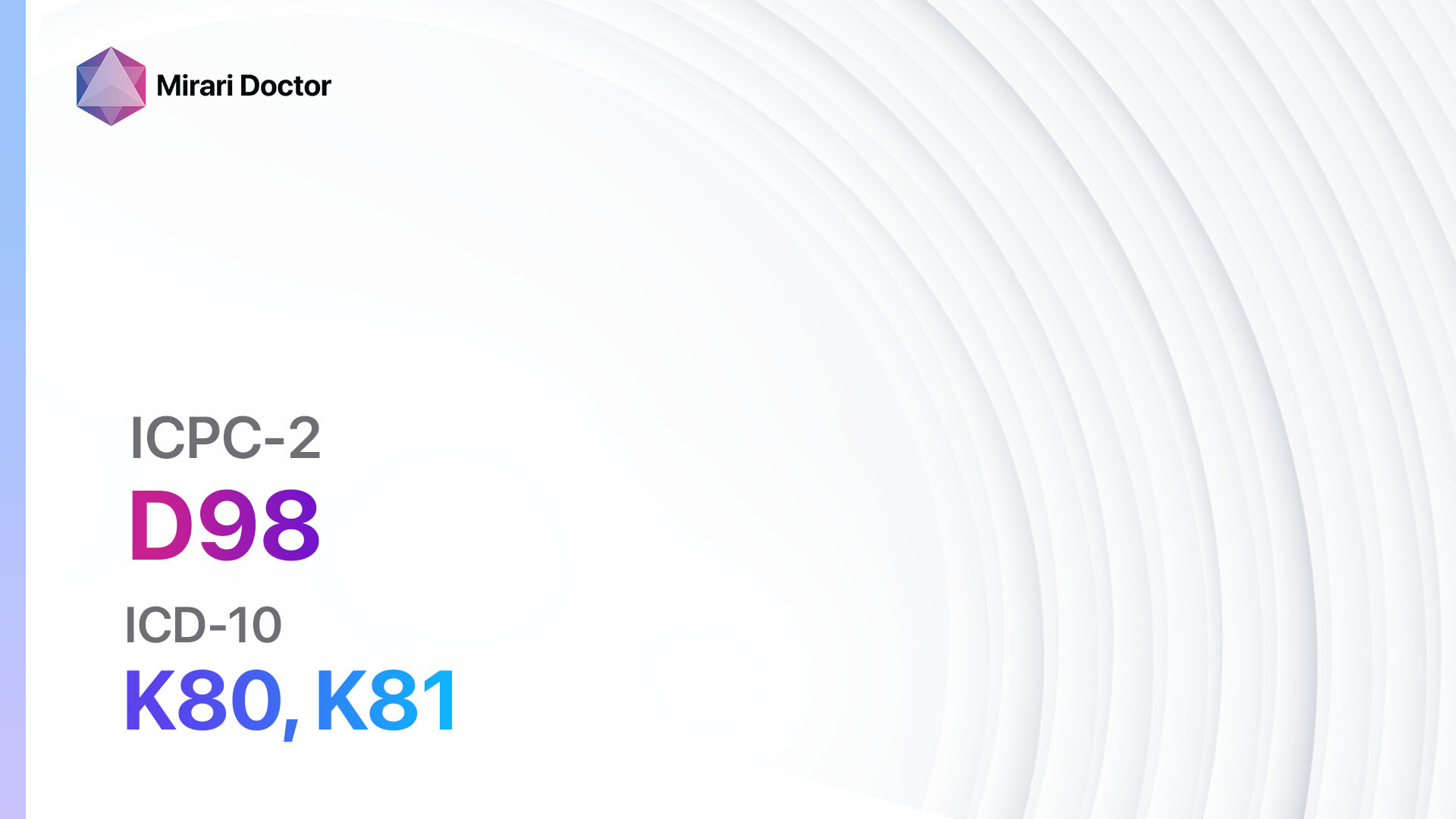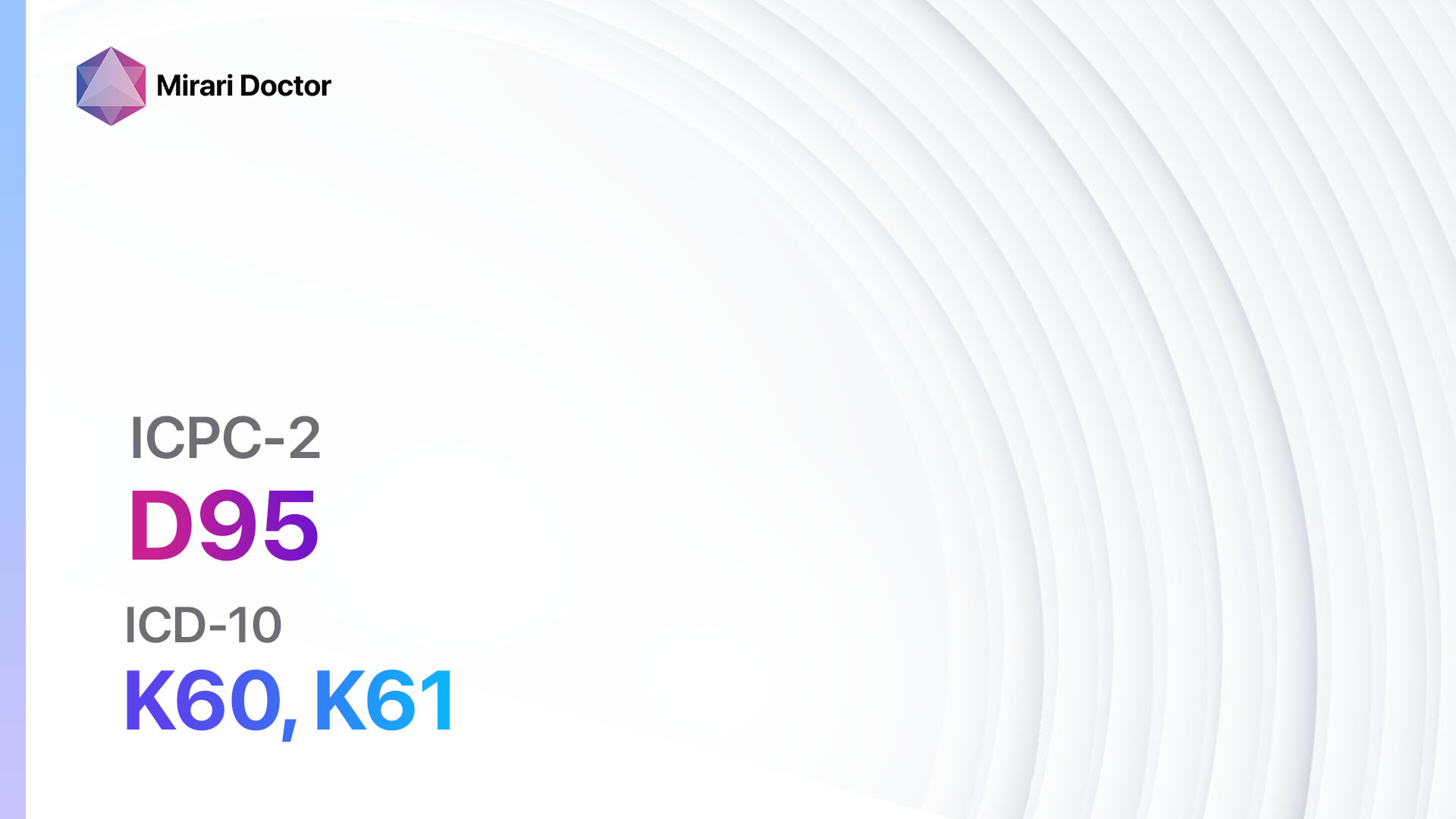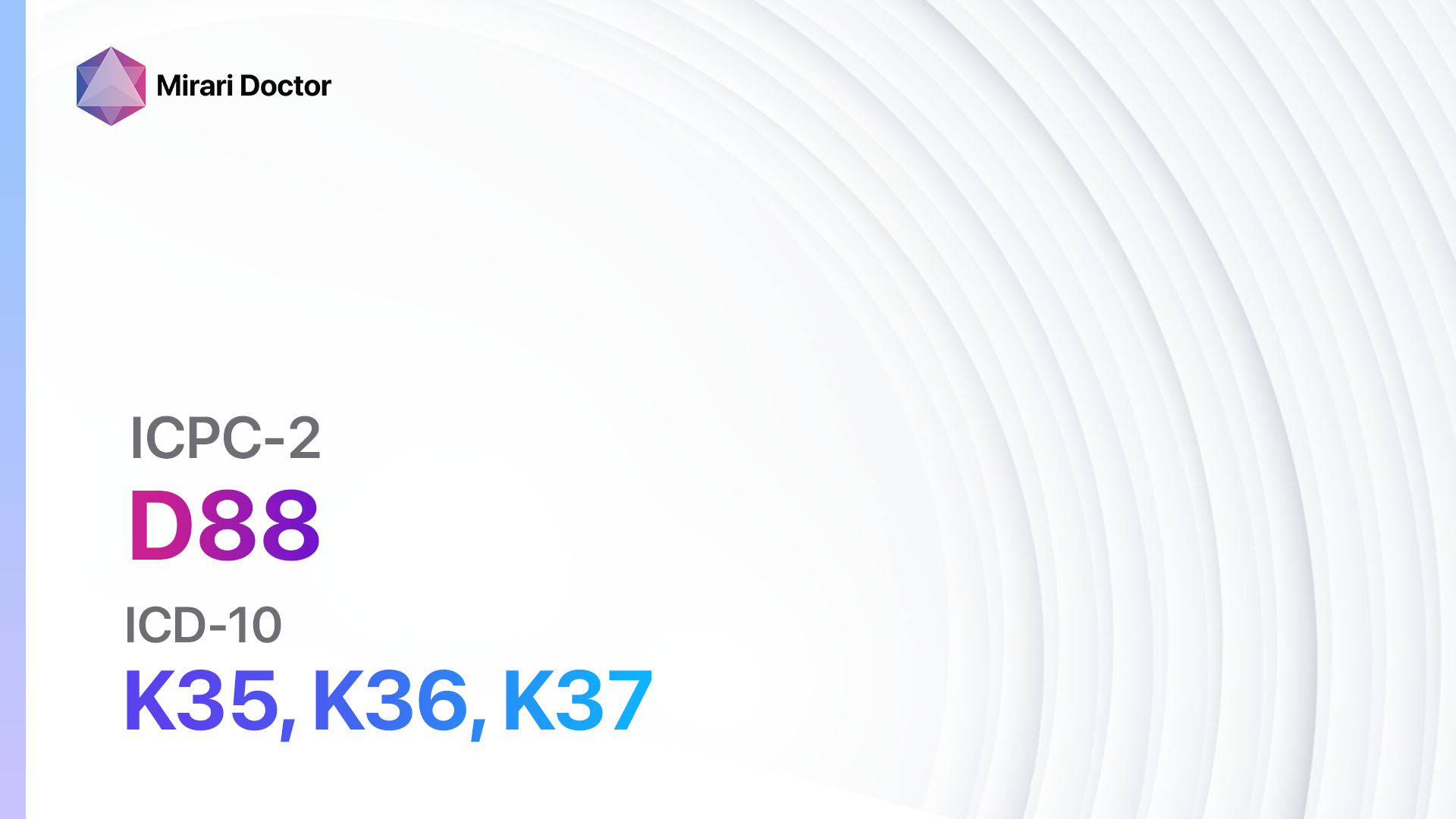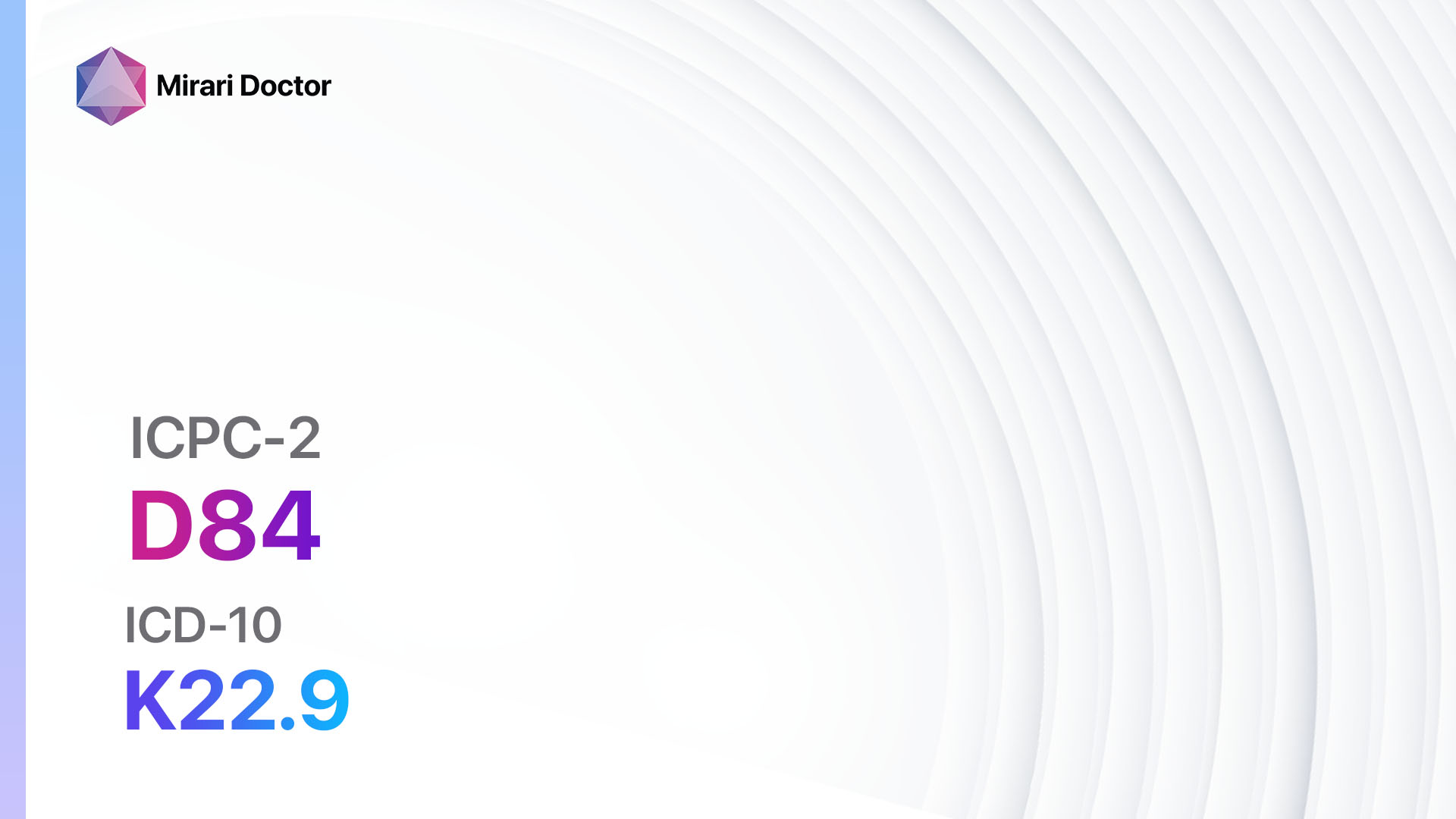
Introduction
Constipation is a common digestive disorder characterized by infrequent bowel movements or difficulty passing stools[1]. It can be a temporary or chronic condition and can significantly impact a person’s quality of life[2]. The aim of this guide is to provide healthcare professionals with a comprehensive overview of constipation, including its symptoms, causes, diagnostic steps, possible interventions, and patient education.
Codes
Symptoms
- Abdominal discomfort or pain[5]
- Infrequent bowel movements (less than three times per week)[6]
- Straining during bowel movements[7]
- Hard or lumpy stools[8]
- Feeling of incomplete evacuation after bowel movements[9]
- Bloating or distension of the abdomen[10]
- Rectal bleeding (in severe cases)
Causes
- Inadequate fiber intake
- Insufficient fluid intake
- Lack of physical activity
- Side effects of certain medications (e.g., opioids, antacids, antidepressants)
- Changes in routine or lifestyle (e.g., travel, pregnancy)
- Medical conditions (e.g., irritable bowel syndrome, hypothyroidism, diabetes)
- Neurological disorders (e.g., Parkinson’s disease, multiple sclerosis)
Diagnostic Steps
Medical History
- Gather information about the patient’s bowel habits, including frequency, consistency, and any changes in routine.
- Identify any risk factors, such as a sedentary lifestyle, poor dietary habits, or medication use.
- Assess for symptoms of underlying medical conditions that may contribute to constipation.
Physical Examination
- Perform a thorough abdominal examination to assess for any signs of distension, tenderness, or masses.
- Evaluate the rectum and anus for any abnormalities, such as hemorrhoids or fissures.
- Check for signs of dehydration or malnutrition.
Laboratory Tests
- Complete blood count (CBC) to rule out anemia or infection.
- Thyroid-stimulating hormone (TSH) to assess thyroid function.
- Electrolyte panel to evaluate for imbalances.
- Fecal occult blood test (FOBT) to rule out gastrointestinal bleeding.
- Additional tests may be ordered based on clinical suspicion or to rule out specific conditions.
Diagnostic Imaging
- Abdominal X-ray to assess for fecal impaction or bowel obstruction.
- Barium enema or colonoscopy to visualize the colon and rectum for any structural abnormalities or masses.
- Anorectal manometry to evaluate the function of the rectum and anal sphincter muscles.
Other Tests
- Colorectal transit study to assess the movement of stool through the colon.
- Anorectal ultrasound to evaluate the structure and function of the rectum and anal sphincter muscles.
- Balloon expulsion test to assess the ability to expel a balloon filled with water from the rectum.
Follow-up and Patient Education
- Schedule follow-up appointments to monitor the effectiveness of interventions and adjust treatment as needed.
- Provide patient education on lifestyle modifications, dietary changes, and the importance of regular bowel movements.
- Discuss the potential need for long-term management and the importance of seeking medical attention if symptoms worsen or new symptoms develop.
Possible Interventions
Traditional Interventions
Medications:
Top 5 drugs for Constipation:
- Bulk-forming laxatives (e.g., Psyllium, Methylcellulose):
- Cost: $5-$20 for a month’s supply.
- Contraindications: Intestinal obstruction, difficulty swallowing.
- Side effects: Bloating, gas, abdominal discomfort.
- Severe side effects: Allergic reactions, severe abdominal pain.
- Drug interactions: May interfere with the absorption of other medications.
- Warning: Adequate fluid intake is necessary for these laxatives to be effective.
- Osmotic laxatives (e.g., Polyethylene glycol, Lactulose):
- Cost: $10-$30 for a month’s supply.
- Contraindications: Intestinal obstruction, galactosemia.
- Side effects: Abdominal cramping, diarrhea.
- Severe side effects: Electrolyte imbalances, dehydration.
- Drug interactions: May interact with other medications, such as antibiotics.
- Warning: Long-term use may lead to dependence.
- Stimulant laxatives (e.g., Bisacodyl, Senna):
- Cost: $5-$15 for a month’s supply.
- Contraindications: Intestinal obstruction, appendicitis.
- Side effects: Abdominal cramping, diarrhea.
- Severe side effects: Rectal bleeding, electrolyte imbalances.
- Drug interactions: May interact with other medications, such as diuretics.
- Warning: Prolonged use may lead to laxative dependence.
- Stool softeners (e.g., Docusate sodium):
- Cost: $5-$15 for a month’s supply.
- Contraindications: Intestinal obstruction, fecal impaction.
- Side effects: Abdominal cramping, diarrhea.
- Severe side effects: Allergic reactions, electrolyte imbalances.
- Drug interactions: May interact with other medications, such as blood thinners.
- Warning: May take several days to produce a bowel movement.
- Prokinetic agents (e.g., Prucalopride, Lubiprostone):
- Cost: $50-$100 for a month’s supply.
- Contraindications: Intestinal obstruction, severe inflammatory bowel disease.
- Side effects: Nausea, diarrhea.
- Severe side effects: Severe abdominal pain, allergic reactions.
- Drug interactions: May interact with other medications, such as antifungals.
- Warning: Not recommended for use in pregnant or breastfeeding women.
Alternative Drugs:
- Lubricant laxatives (e.g., Mineral oil): Helps soften stools and ease passage.
- Chloride channel activators (e.g., Linaclotide): Increases fluid secretion in the intestines to promote bowel movements.
- Guanylate cyclase-C agonists (e.g., Plecanatide): Increases fluid secretion and motility in the intestines.
- Selective serotonin 5-HT4 receptor agonists (e.g., Prucalopride): Increases colonic motility.
Surgical Procedures:
- Surgical interventions are typically reserved for severe cases of constipation that do not respond to conservative treatments.
- Procedures may include colectomy, subtotal colectomy, or rectal resection to remove a portion of the colon or rectum.
- Costs for surgical procedures can vary significantly depending on the specific procedure and location.
Alternative Interventions
- Acupuncture: May help stimulate bowel movements and relieve constipation. Cost: $60-$120 per session.
- Herbal remedies: Certain herbs, such as senna, aloe vera, and cascara sagrada, have been traditionally used to treat constipation. Cost: Varies depending on the specific herb and preparation.
- Probiotics: Some studies suggest that certain strains of probiotics may help regulate bowel movements and improve constipation. Cost: Varies depending on the brand and formulation.
- Biofeedback therapy: Can help retrain the muscles involved in bowel movements and improve coordination. Cost: $100-$200 per session.
- Physical therapy: Pelvic floor exercises and manual techniques may help improve bowel function. Cost: $75-$150 per session.
Lifestyle Interventions
- Increase fiber intake: Encourage the consumption of fruits, vegetables, whole grains, and legumes. Cost: Varies depending on food choices.
- Increase fluid intake: Recommend drinking plenty of water throughout the day. Cost: Minimal.
- Regular exercise: Encourage physical activity to promote bowel motility. Cost: Varies depending on the chosen activity.
- Establish a regular bathroom routine: Encourage patients to set aside time each day for bowel movements. Cost: None.
- Stress management: Help patients identify and manage stressors that may contribute to constipation. Cost: Varies depending on chosen stress management techniques.
It is important to note that the cost ranges provided are approximate and may vary depending on the location and availability of the interventions.
Mirari Cold Plasma Alternative Intervention
Understanding Mirari Cold Plasma
- Safe and Non-Invasive Treatment: Mirari Cold Plasma is a safe and non-invasive treatment option for various skin conditions. It does not require incisions, minimizing the risk of scarring, bleeding, or tissue damage.
- Efficient Extraction of Foreign Bodies: Mirari Cold Plasma facilitates the removal of foreign bodies from the skin by degrading and dissociating organic matter, allowing easier access and extraction.
- Pain Reduction and Comfort: Mirari Cold Plasma has a local analgesic effect, providing pain relief during the treatment, making it more comfortable for the patient.
- Reduced Risk of Infection: Mirari Cold Plasma has antimicrobial properties, effectively killing bacteria and reducing the risk of infection.
- Accelerated Healing and Minimal Scarring: Mirari Cold Plasma stimulates wound healing and tissue regeneration, reducing healing time and minimizing the formation of scars.
Mirari Cold Plasma Prescription
Video instructions for using Mirari Cold Plasma Device – D12 Constipation (ICD-10:K59.0)
| Mild | Moderate | Severe |
| Mode setting: 1 (Infection) Location: 2 (Prostate & Uterus) Morning: 15 minutes, Evening: 15 minutes |
Mode setting: 1 (Infection) Location: 2 (Prostate & Uterus) Morning: 30 minutes, Lunch: 30 minutes, Evening: 30 minutes |
Mode setting: 1 (Infection) Location: 2 (Prostate & Uterus) Morning: 30 minutes, Lunch: 30 minutes, Evening: 30 minutes |
| Mode setting: 2 (Wound Healing) Location: 3 (Kidney, Liver & Spleen) Morning: 15 minutes, Evening: 15 minutes |
Mode setting: 2 (Wound Healing) Location: 3 (Kidney, Liver & Spleen) Morning: 30 minutes, Lunch: 30 minutes, Evening: 30 minutes |
Mode setting: 2 (Wound Healing) Location: 3 (Kidney, Liver & Spleen) Morning: 30 minutes, Lunch: 30 minutes, Evening: 30 minutes |
| Mode setting: 7 (Immunotherapy) Location: 1 (Sacrum) Morning: 15 minutes, Evening: 15 minutes |
Mode setting: 7 (Immunotherapy) Location: 1 (Sacrum) Morning: 30 minutes, Lunch: 30 minutes, Evening: 30 minutes |
Mode setting: 7 (Immunotherapy) Location: 1 (Sacrum) Morning: 30 minutes, Lunch: 30 minutes, Evening: 30 minutes |
| Total Morning: 45 minutes approx. $7.50 USD, Evening: 45 minutes approx. $7.50 USD |
Total Morning: 90 minutes approx. $15 USD, Lunch: 90 minutes approx. $15 USD, Evening: 90 minutes approx. $15 USD, |
Total Morning: 90 minutes approx. $15 USD, Lunch: 90 minutes approx. $15 USD, Evening: 90 minutes approx. $15 USD, |
| Usual treatment for 7-60 days approx. $105 USD – $900 USD | Usual treatment for 6-8 weeks approx. $1,890 USD – $2,520 USD |
Usual treatment for 3-6 months approx. $4,050 USD – $8,100 USD
|
 |
|
Use the Mirari Cold Plasma device to treat Constipation effectively.
WARNING: MIRARI COLD PLASMA IS DESIGNED FOR THE HUMAN BODY WITHOUT ANY ARTIFICIAL OR THIRD PARTY PRODUCTS. USE OF OTHER PRODUCTS IN COMBINATION WITH MIRARI COLD PLASMA MAY CAUSE UNPREDICTABLE EFFECTS, HARM OR INJURY. PLEASE CONSULT A MEDICAL PROFESSIONAL BEFORE COMBINING ANY OTHER PRODUCTS WITH USE OF MIRARI.
Step 1: Cleanse the Skin
- Start by cleaning the affected area of the skin with a gentle cleanser or mild soap and water. Gently pat the area dry with a clean towel.
Step 2: Prepare the Mirari Cold Plasma device
- Ensure that the Mirari Cold Plasma device is fully charged or has fresh batteries as per the manufacturer’s instructions. Make sure the device is clean and in good working condition.
- Switch on the Mirari device using the power button or by following the specific instructions provided with the device.
- Some Mirari devices may have adjustable settings for intensity or treatment duration. Follow the manufacturer’s instructions to select the appropriate settings based on your needs and the recommended guidelines.
Step 3: Apply the Device
- Place the Mirari device in direct contact with the affected area of the skin. Gently glide or hold the device over the skin surface, ensuring even coverage of the area experiencing.
- Slowly move the Mirari device in a circular motion or follow a specific pattern as indicated in the user manual. This helps ensure thorough treatment coverage.
Step 4: Monitor and Assess:
- Keep track of your progress and evaluate the effectiveness of the Mirari device in managing your Constipation. If you have any concerns or notice any adverse reactions, consult with your health care professional.
Note
This guide is for informational purposes only and should not replace the advice of a medical professional. Always consult with your healthcare provider or a qualified medical professional for personal advice, diagnosis, or treatment. Do not solely rely on the information presented here for decisions about your health. Use of this information is at your own risk. The authors of this guide, nor any associated entities or platforms, are not responsible for any potential adverse effects or outcomes based on the content.
Mirari Cold Plasma System Disclaimer
- Purpose: The Mirari Cold Plasma System is a Class 2 medical device designed for use by trained healthcare professionals. It is registered for use in Thailand and Vietnam. It is not intended for use outside of these locations.
- Informational Use: The content and information provided with the device are for educational and informational purposes only. They are not a substitute for professional medical advice or care.
- Variable Outcomes: While the device is approved for specific uses, individual outcomes can differ. We do not assert or guarantee specific medical outcomes.
- Consultation: Prior to utilizing the device or making decisions based on its content, it is essential to consult with a Certified Mirari Tele-Therapist and your medical healthcare provider regarding specific protocols.
- Liability: By using this device, users are acknowledging and accepting all potential risks. Neither the manufacturer nor the distributor will be held accountable for any adverse reactions, injuries, or damages stemming from its use.
- Geographical Availability: This device has received approval for designated purposes by the Thai and Vietnam FDA. As of now, outside of Thailand and Vietnam, the Mirari Cold Plasma System is not available for purchase or use.
References
- Bharucha AE, Pemberton JH, Locke GR 3rd. American Gastroenterological Association technical review on constipation. Gastroenterology. 2013;144(1):218-238. doi:10.1053/j.gastro.2012.10.028
- Suares NC, Ford AC. Prevalence of, and risk factors for, chronic idiopathic constipation in the community: systematic review and meta-analysis. Am J Gastroenterol. 2011;106(9):1582-1592. doi:10.1038/ajg.2011.164
- WONCA International Classification Committee. ICPC-2: International Classification of Primary Care. 2nd ed. Oxford: Oxford University Press; 1998.
- World Health Organization. International Statistical Classification of Diseases and Related Health Problems (ICD-10). 10th Revision. Geneva: World Health Organization; 2016.
- Mearin F, Lacy BE, Chang L, et al. Bowel Disorders. Gastroenterology. 2016;150(6):1393-1407.e5. doi:10.1053/j.gastro.2016.02.031
- Bharucha AE, Dorn SD, Lembo A, Pressman A. American Gastroenterological Association medical position statement on constipation. Gastroenterology. 2013;144(1):211-217. doi:10.1053/j.gastro.2012.10.029
- Rao SS, Rattanakovit K, Patcharatrakul T. Diagnosis and management of chronic constipation in adults. Nat Rev Gastroenterol Hepatol. 2016;13(5):295-305. doi:10.1038/nrgastro.2016.53
- Tack J, Müller-Lissner S, Stanghellini V, et al. Diagnosis and treatment of chronic constipation–a European perspective. Neurogastroenterol Motil. 2011;23(8):697-710. doi:10.1111/j.1365-2982.2011.01709.x
- Johanson JF, Kralstein J. Chronic constipation: a survey of the patient perspective. Aliment Pharmacol Ther. 2007;25(5):599-608. doi:10.1111/j.1365-2036.2006.03238.x
- Lacy BE, Mearin F, Chang L, et al. Bowel Disorders. Gastroenterology. 2016;150(6):1393-1407.e5. doi:10.1053/j.gastro.2016.02.031
Related articles
Made in USA




























